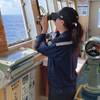Women in Shipping: 21st Century Workforce
In an industry facing significant skill shortages many organizations are ready to take a fresh approach to recruiting and retaining women in the shipping workplace.
According to Lee Clarke, Regional Director – Northern Hemisphere at Dynama, the first place to start is establishing an accurate gender profile of your organization using workforce management technology.
Of the estimated 1.25 million seafarers in the world, fewer than 2% of them are thought to be women. For example, in the UK the maritime minister Nusrat Ghani MP – who herself is only the second woman to hold the UK Department for Transport portfolio for the country’s maritime sector – has praised the establishment of the ‘Women in Maritime Taskforce’.
Set up by Maritime UK, the organization aims to identify practical steps to recruit and retain more women, particularly those in mid or senior positions across maritime’s shipping, ports, marine and business services industries. It also seeks to address critical areas such as career progression paths for women in the sector and any gender pay gap.
Dynama’s parent company Allocate Software has pledged to have 50% of women on their payroll by 2022 and Dynama is following their lead.
The flexibility of today’s workforce management (WFM) solutions can help to nurture talent in the shipping industry regardless of gender. This is where the advanced data management and superior reporting capabilities of modern technology come into their own.
Establish a benchmark – the first step to creating change is to understand the current state of diversity across your organization and this comes down to the quality of data held. The beauty of modern integrated WFM systems is, that unlike manual spreadsheets, they link seamlessly with critical HR databases to provide a realistic perspective of employees across an organization.
They capture a real-time view of maritime staff, including personal details such as gender, age, career and pay history, past roles and activities including projects worked on and where. This makes it easy to analyse the gender profile of an organization and to continually track any gaps in specific jobs or at different management levels and match skills to jobs available.











